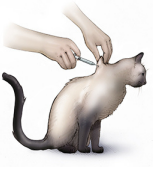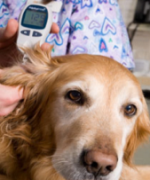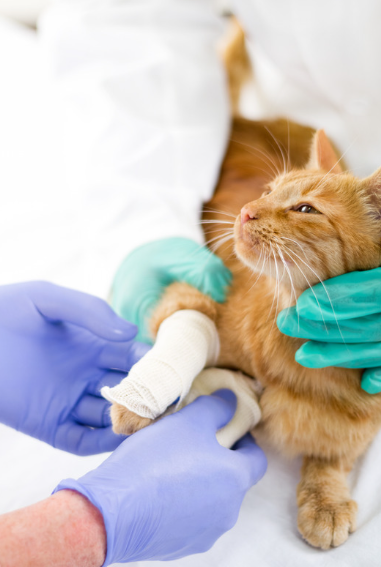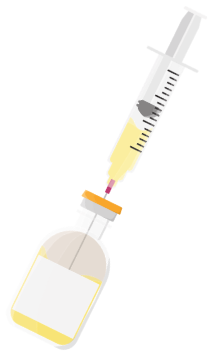
Diabetes Mellitus
What is it?
Insulin is a hormone naturally produced by the body and is vital in controlling the body's metabolism. Diabetes mellitus occurs when the body cannot produce or respond to insulin, resulting in high blood sugar (glucose) levels. In cats, diabetes can be caused by obesity and may be reversible (type 2 diabetes). In dogs, diabetes is usually type 1, requiring life long insulin medication
Insulin
The correct dose will be determined by your vet. Initially it may take some time to stabilise and so it is important to follow instructions. Please do not change the dose without discussing with the vet first. Insulin should be given with food (normally either once or twice daily depending on the vet's advice. If you are monitoring the blood glucose at home (see later) a reading can be taken before administering the insulin to help decide if your pet should have insulin. If the blood glucose is <10mmol/l, do not give the insulin and repeat the reading 1 hour after eating.

Giving Insulin
- 1. Insulin should ALWAYS be kept refrigerated. After taking the insulin out of the fridge: Caninsulin: SHAKE the bottle Glargine Lantus: ROLL the bottle between your palms. Do not shake.
- 2. Hold the bottle upside down and insert the needle into the seal, draw the insulin into the syringe using the TOP of the plunger line corresponding to the correct amount, ensuring there are no bubbles in the syringe. Use one hand to lift up the skin between the shoulder blades to create a "tent".
- 3. The needle should be inserted gently into the "tent", keeping the needle parallel with your pet's back. Push the plunger to administer the insulin and remove and dispose of the needle safely. Don't worry, we'll show you how to do all of this.
Diet
A special low carbohydrate diet will be advised. Daily routine is VERY important and so changes in diet type, quantity or timing should be avoided. Snacks can be given but these should be low carbohydrate and should not vary from day to day.
Complications
Please contact us immediately if:
Please contact us immediately if:
- you think you have given too much insulin
- your pet is not eating for more than 24 hours – do not give insulin
- your pet seems tired and weak – put some honey in the mouth whilst you contact us
- your pet is urinating more frequently or having difficulty urinating
- your pet is drinking more than normal
If you are able to monitor the blood glucose at home:
TOO LOW: <4mmol/l
TOO HIGH: >20mmol/l
Diabetic animals are much more at risk for the following conditions - Urinary tract infections - Skin infections - Cataracts - Other hormone disease

Monitoring
Monitoring is important as it can prevent life threatening conditions associated with too much or too little insulin. Diabetes can be reversed sometimes in cats and so monitoring is essential. We can show you how to monitor blood glucose readings at home or this can be monitored in the clinic (your pet may need to stay with us for the day).
New monitoring systems such as the Freestyle Libre have recently made glucose monitoring at home even easier.
Related Blogs




